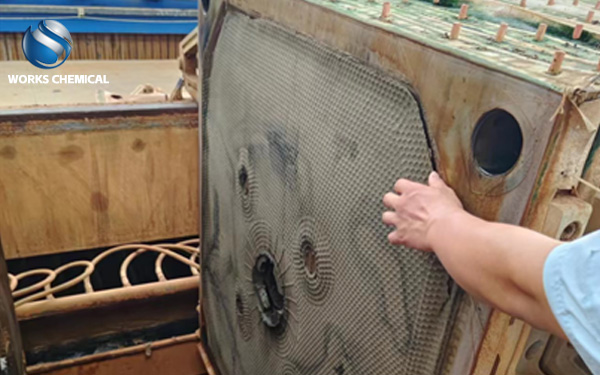
Hello everyone, I am a technical engineer at Works Chemical, today to explain to you the advantages of sludge conditioner compared with polyacrylamide in plate and frame filter press.

Works Chemical- Sludge conditioner, sludge dewatering synergist manufacturer
At present, in order to save costs, most sewage treatment plants use polyacrylamide when pressing mud with plate and frame filter press. Polyacrylamide is a commonly used flocculant in sewage, which is usually divided into anionic, cationic and non-ionic. Pressed mud usually uses cationic PAM, which is a polymer flocculant and has a high viscosity after dissolution. When polyacrylamide is added to sewage treatment plants, it often occurs that too much is added, and the sewage becomes sticky. When entering the mud, these sticky mud water will also enter the plate frame and block the filter cloth, and the water can not be filtered out. The mud pressed out is still thin mud and stained with filter cloth, which requires manual cleaning with high-pressure water guns and is time-consuming and laborious, and also affects production.
Sludge conditioner does not make sewage sticky after mixed reaction with sludge, and the floc formed after the reaction of sludge conditioner with sludge is rigid floc, which is different from the false floc formed by polyacrylamide. The rigid floc can make the sludge form a channel when entering the plate frame to let the water filter out the filter cloth, so as to improve the efficiency of mud entry. The moisture content of the pressed sludge is low.